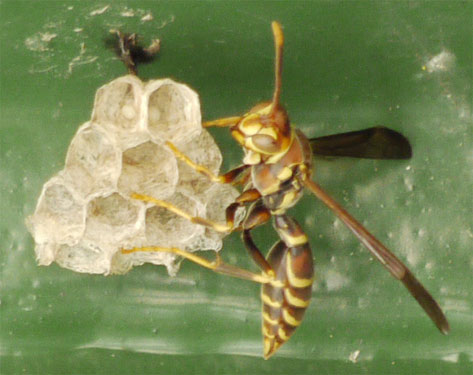
Here's a nest under a bridge. The queen has built this ½" diameter nest and laid a few eggs for her sterile female helpers.
 |
Friday, April 16th, 2010 Here's a nest under a bridge. The queen has built this ½" diameter nest and laid a few eggs for her sterile female helpers. |
|
Friday, April 23rd, 2010 A week later the eggs have hatched and four Larvae for the nurses are growing. |
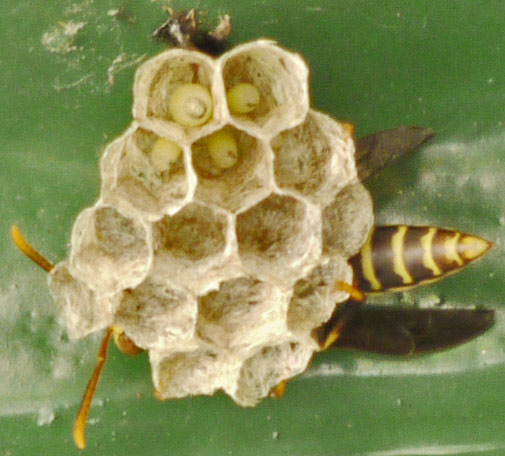 |
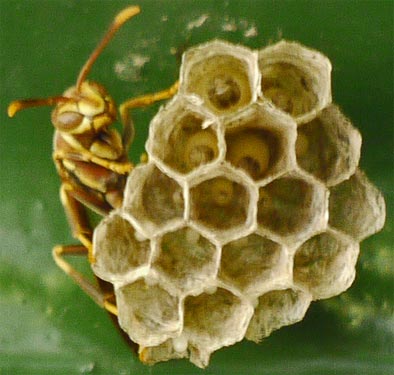
|
Monday, April 26th, 2010 Eggs in all Cells. More Larvae Growing. |
|
Friday, April 30th, 2010 The 4 oldest Larvae have grown to fill their cells. |
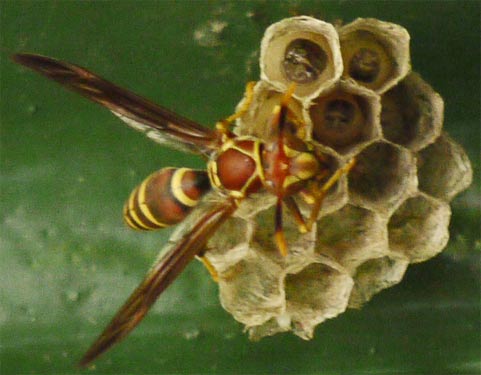
|
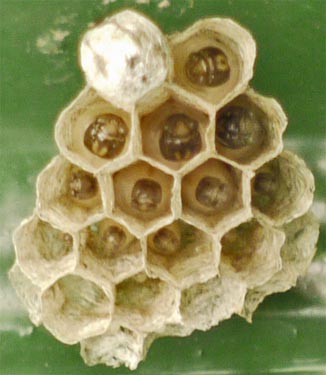
|
Tuesday, May 4th, 2010 The Larva in the upper left cell has Pupated, and has covered herself, equivalent to a caterpillar making a coccoon. The cover is silk: you can see that it is whiter and smoother than the paper pulp nest material. The eggs were laid more or less starting with the upper left, filling down and across the nest. You can see the features of the larvae filling in as each larva ages, older at the top and younger as you go down. |
|
Friday, May 7th, 2010 3 more Larvae have covered their cells. Dwell cursor over each feature of the picture for more info. |
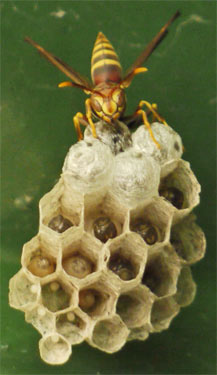
|
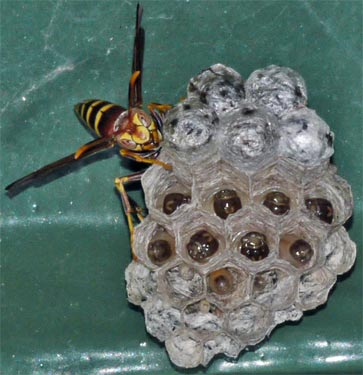
|
Monday, May 10th, 2010 5 Larvae have Pupated. |
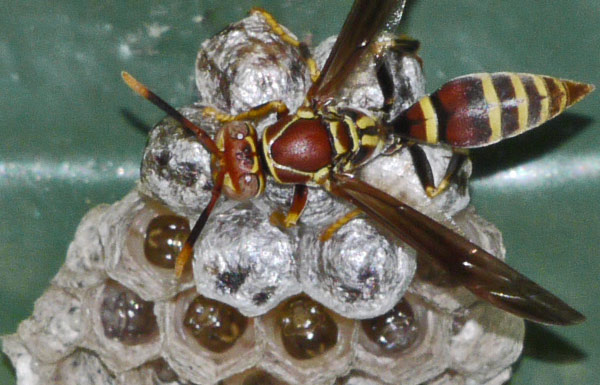
Saturday, May 15th, 2010
7 Larvae have Pupated.
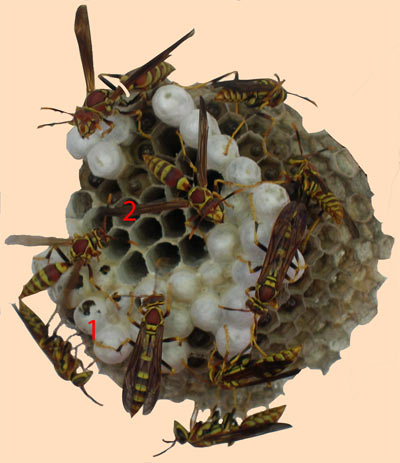
|
Friday, July 3rd, 2009 I saw a wasp nest about 8 feet from my back door, and thought it would be interesting to observe it over time. See near 1 some of the cell covers are fractured open. Above 2, see cells are occupied, but below they are empty. |
Wasp Background
A queen wasp builds a nest alone in the spring. She finds weathered wood, chews on it, and builds the paper nest from the resulting mixture of wood pulp and saliva. Then she lays eggs for sterile females, who will do the chores around the nest and nursing of more wasps. Thus, most of the wasps you see in these photos are the sterile females. At the end of the summer season, the queen lays eggs of males and queens. The new queens mate with one or more males in autumn, storing up a sperm supply. The next season, the new queen start the cycle again.
Here's a link to more information on wasps.
The wasps don't seem the least bit disturbed by me, even though I visit them for observations daily, and the camera gets within 5 inches of the nest. I suppose I'll kill them if they seem to get perturbed or if they bite me.
OK, a few days later I did get a couple of bites, but most days, they completely ignore me.
|
Tuesday, July 14th, 2009 Not much happened from day to day, but after 11 days, many of the cells that were occupied but uncovered have now been covered, and the broken shells are now repaired. |
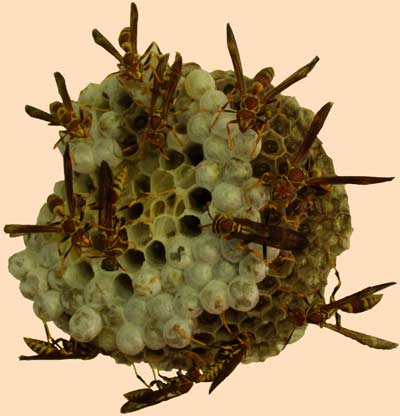
|
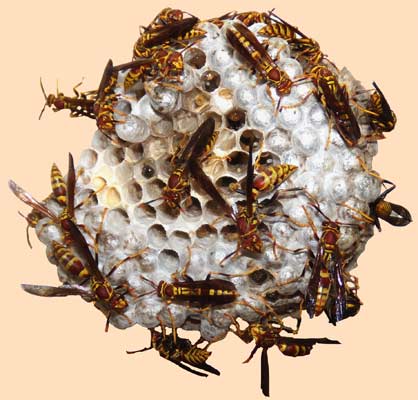
|
Wednesday, July 22nd, 2009 More of the cells are capped off. Please see close up of cells below. |
|
Wednesday, July 22nd, 2009 - Magnified Inside some of the cells, you can see the Larvae. In other cells, there are small white blobs, and still others have larger amber blobs. The small white blobs are eggs, and the larger amber ones are probably food, something like honey. |
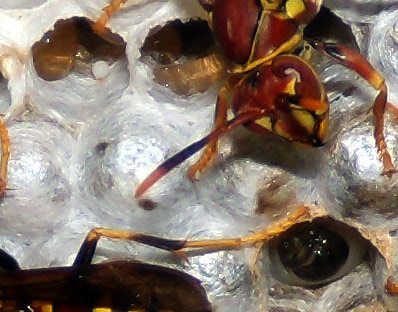
|
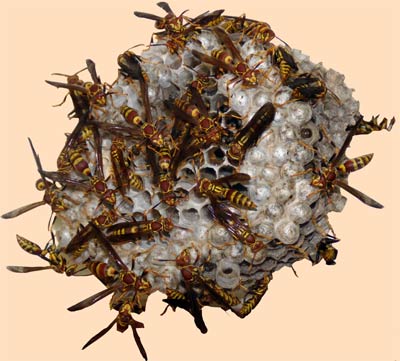
|
Tuesday, July 28th, 2009 |
|
Friday, August 21st, 2009 Note that different cells are now closed off, and that lots of Larvae can be seen in open cells. |
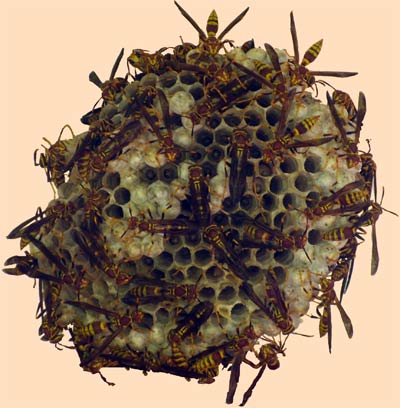
|
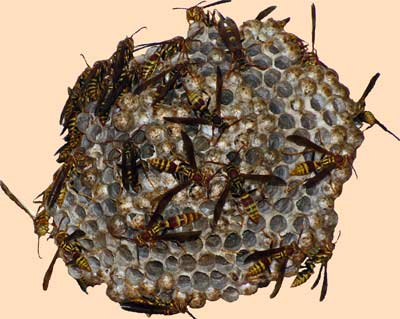
|
September 28th, 2009 There are many more empty cells. |
|
Tuesday, October 20th, 2009 The last five days have had high temperatures near 55°F and low temperatures near freezing; the first cold snap of the year. The wasps have huddled on the back side of the nest. All open cells are empty. |
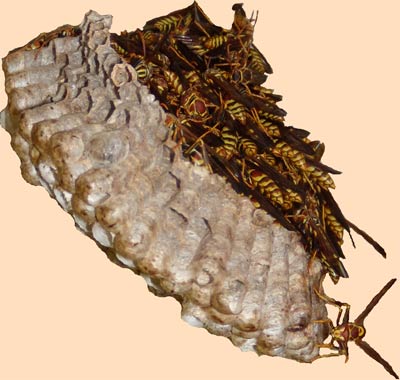
|
Monday, October 26th, 2009
I chased the wasps away with a blast from the garden hose and took down the nest. The open cells were all empty. The closed cells evidently all had dead wasps. A few were fairly complete and mummified, so you could see all their features. But most were moldy or crumbled to bits when I cut the cells open.